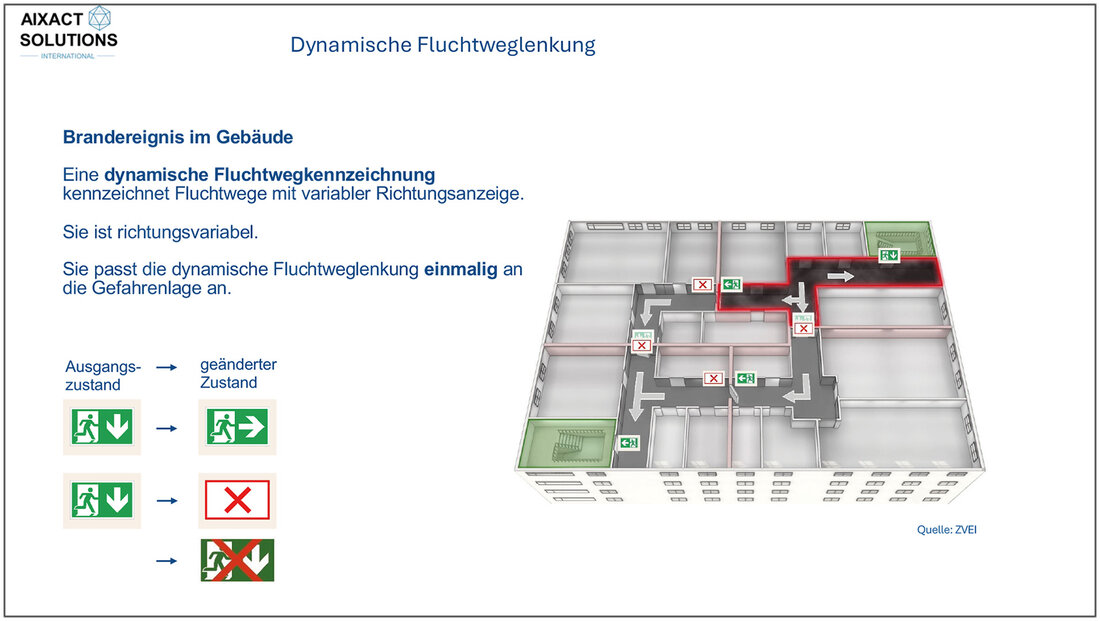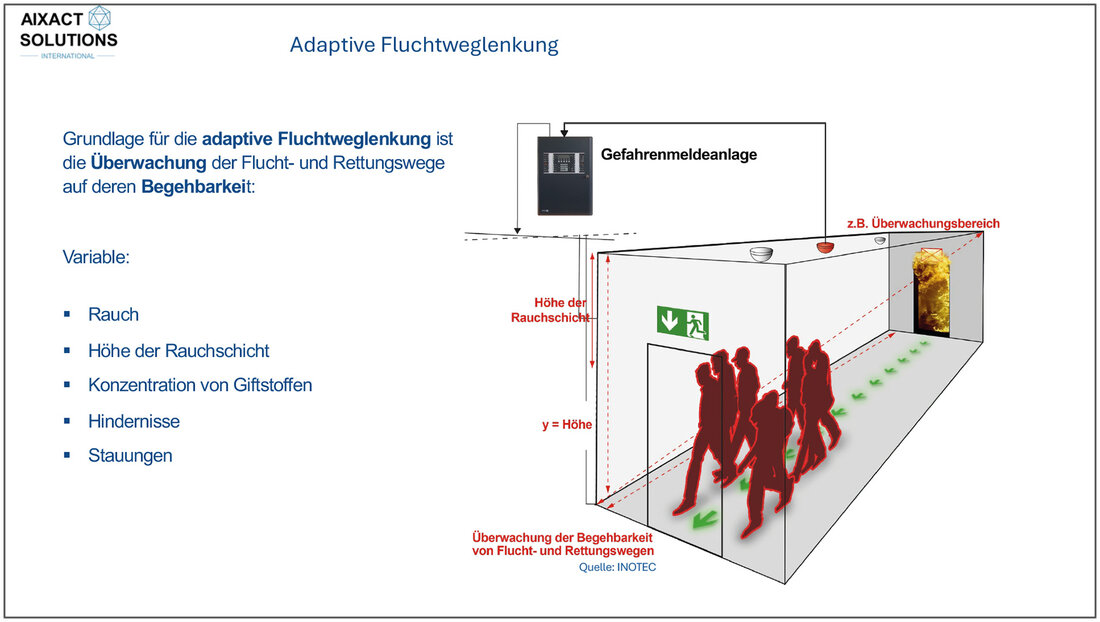Escape route signs in tunnels illustrate the problem: The signs tell the distances to the safe area. However, the length of the route as a criterion can be misleading. «People fleeing should take the safest route out of the danger zone,» explains Franz-Joachim Schäfer, «and that is not necessarily the shortest.» With his 50 years of experience in the fire service, Schäfer looks at the new DIN 14036 standard for dynamic and adaptive escape routing. His conclusion: Dynamic escape routing is already common practice - fire services should be prepared for it. The further development of adaptive escape routing needs to be monitored.
Dynamic escape routing can adapt once
Dynamic escape routing can adapt once to a dangerous situation in the case of an incident. Two options are possible here:
- The direction arrow of the escape route pictogram is replaced so that a different escape direction is displayed.
- The escape route pictogram is crossed out or replaced by a crossed line to mark this route as closed.

Already in use in underground transport systems
Franz-Joachim Schäfer names various possible applications for dynamic escape routing: It can be used as a compensatory measure, for example, if an escape route is temporarily unusable due to renovation work or to indicate an alternative escape route, such as in instances of fire in a historic building where the central wooden staircase cannot be used as an escape route. In a tunnel, a typical application would be that only one escape direction is displayed. According to Schäfer, systems for dynamic escape routing are already in use in underground stations, tunnels and multi-storey car parks.
Adaptive escape routing can adapt multiple times
The principle of adaptive escape routing means that several adaptations of the escape route signage to the incident are possible as time progresses. In order to adapt, the system must react to the progression of the hazard and recognise, for example, how the smoke is propagating, whether fleeing people are congesting or obstacles are blocking the way. It is directionally variable and adapts dynamically at all times.

So far, Franz-Joachim Schäfer does not consider adaptive escape routing to be ready for mass implementation and cost-intensive due to the complex modifications to the system. He recommends that fire services keep an eye on developments. This is particularly true in combination with artificial intelligence.
Define protection objectives and scenarios
According to Schäfer, in order for non-static escape routing to be used sensibly, the protection objectives must first be defined, and the respective scenarios must be developed on this basis. The aim is to ensure that the escape route is safe, clear and visible. Schäfer also recommends that the use of dynamic and, later, adaptive escape routing should be noted on the escape and rescue plans, in the fire service deployment plans, and on the fire alarm system of a building.






